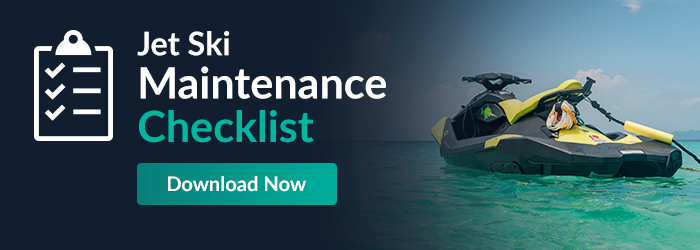8 Things You Need to Know About Your PWC
Posted by:GJW Direct | Jun 14, 2019
A personal watercraft is a fun and relatively inexpensive way to enjoy life on the water all year round. But if you’re not clued up on everything you need to know about PWCs, including safety equipment and general riding techniques, then you could land yourself in some dangerous situations.
Here are eight things you need to know about your jet ski…
1. PWC accident risks
No matter how experienced you are, anyone can crash while onboard their PWC. That’s why it’s so important to review the riding rules before heading out on the water. A lot of modern PWCs will have their own extensive manuals, so it’s worth looking over this to make sure you’re riding safely.
2. Reboarding your PWC
Reboarding your PWC should you fall off is relatively easy. If you didn’t know, personal watercrafts come in two different varieties: one whereby you can pre-set the idle speed before take off so when you fall off, it continues to circle around. The second type is when you fall off, the engine cuts off with a special lanyard (engine kill switch) which must be properly attached to you before taking off. This way, if you fall off the PWC the lanyard will go with you.
3. Safety equipment
All PWCs have specific safety requirements, including:
- Everyone on board a PWC must be wearing a life jacket at all times
- PWC riders must carry on board a fully charged fire extinguisher and a sound-producing device in the event of an emergency
- If you’re riding a lanyard-type ignition, you must attach the lanyard to your clothing, your wrist or your life jacket
- You may only operate a PWC during daylight hours.

4. Passengers belong on the back
Passengers who are not operating the PWC must sit at the back of the craft, behind the rider. If a passenger is too small to ride on the back and hold on to you, then unfortunately they can’t be on board.
5. PWC courses
Operating a PWC can be tricky to get hold of, in terms of both steering and performance. If you’re a beginner, we’d recommend taking a PWC course just to be sure that you’re able to operate it safely.
6. Riding gear
Besides a life jacket, you’re not currently required to wear any other safety gear. However, for beginners, it’s recommended that you wear a helmet while getting used to operating your craft.
7. PWC insurance
If you own a PWC, it will need to be insured. You can buy a specific PWC insurance policy which covers any damage to your craft, theft and bodily injury. Find out more and get a quote here.
8. Daily maintenance
Owning a PWC isn’t without its responsibilities. You need to make sure you’re keeping up with daily maintenance like fuel checks, general cleaning and using a protective cover when not in use. This will help extend the lifetime of your jet ski and improve its performance.
Topics - GJW Direct Safety Jet Ski Insurance
Spotlight on Parker Adams
Feb 1, 2024Who is Parker Adams?
Parker Adams is an award-...
Topics- GJW Direct, Partners
Canal Boat Insurance: Key Features of a GJW Direct policy
Jan 16, 2023Enjoy your precious time out on the water, leisurely cruising, or permanently living. Canal boats...
Topics- GJW Direct, Narrowboat, Insurance
Cowes Classics Week
Jul 26, 2022“If I want to enjoy racing, do I have to spend a lot of money on a new boat and join an arms race...
Topics- Events, GJW Direct, Yacht, Boat Shows, Classic Boats, South Coast, Sailing Yacht, Yacht Racing, yacht clubs, uk, Sponsorship

.png)

